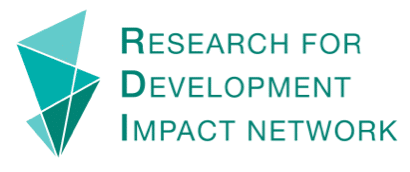What is the point of this document?
The ‘Research Communication and Uptake Snapshot’ showcases how research findings are used in the Australian international development sector. There is a key focus on how such findings are implemented into Australian policy and practice.
Who wrote it?
The Research for Development Impact Network (RDI Network) developed this ‘snapshot’ report, in collaboration with Coffey International Development (now known as Tetra Tech).
Who is it meant for?
This report is for any development organisations and individuals who are involved in research production. It is aimed at all levels of expertise.
Why should I read it?
If you don’t know how research findings are used in practical terms, then how can you ensure your research has an impact? The dialogue and survey findings within the report fill this knowledge gap. These findings are useful at any stage in the research production.
Key takeaways:
- Research must be accessible and practical. It is also beneficial to have summaries of the document with the key points, following with additional links to read further. Move away from theory and sector jargon in summaries. This provides the reader with short and ready-to-use information that can be applied instantly.
- Engage with stakeholders from the beginning. These early interactions empower all stakeholders, but also build trust and credibility. It also allows stakeholders to articulate what they need from the research. Stakeholders will be more inclined to understand the quality of the work being produced, and even quicker at implementing!
- Invest in research communication. There is an identifiable skill gap in research communication and uptake amongst research producers. To fill this, collaborate with research communication specialists. Enlisting specialists who will solely focus on disseminating research will increase the level of exposure and accessibility.
- Who can use your research? There is a predominant barrier for many organisations and individuals in accessing credible, relevant research. That barrier is paywalls. A paywall is a method of restricting access to content by means of a paid subscription. Paywalls are extensively used on news sites and online academic libraries. Restricting access to research is a self-sabotaging activity, as only half the intended audience is reached. Steps to enable open access to local organisations should be considered.
- Research is not static. Adaptive programming and research require continuous review and reflective practices. This ensures that relevant changes and problems are identified when they arise. This approach allows flexibility in moving the focus according to the flow of the project.
Chapter Outline:
- If you are short on time and want to know the essence of the report, head to Chapter Four. You will find all the key messages and recommendations of organisations. It is split into categories for organisations that fund / deliver aid, and those who produce and communicate research.
- Chapter Five, section four, provides four different models for effective research uptake. Each model identifies a different way for effective research design and stakeholder engagement. These models are evidenced by interviews and dialogues with individuals within the Australian development sector.
- Chapter Five, section five, also focuses on what factors are going to help or restrict effective research communication. This will prove most beneficial in the design stage of a project, as it highlights practical measures that can be adopted.
Link to full report:
- Research Communication and Uptake (1 hour read, PDF)
- Published 2018



